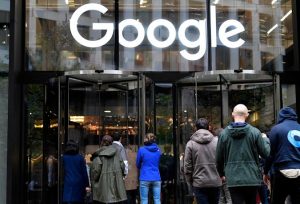
For the past couple of years, search engine optimization has greatly evolved. Gone are the days when lame SEO strategies we used to ensure that high web ranking is achieved. More civilized strategies are now in place, and it is about time you tried them. On-Page optimization is seen as a core pillar in SEO. This is because the strategy involves web owners actively. On-Page optimization is all about employing SEO strategies within your website and not beyond. The strategies have a lot to do with content management.
It all starts with content creation. It is in the process of content creation that on-page optimization strategies are implemented. All strategies in this line are meant to drive traffic to your site. For your information, on-page optimization is more effective as compared to its off-page counterpart. It has been confirmed that over 80% of SEO success relies heavily on on-page optimization hence the need to implement it to the fullest.
So, which are some of the techniques that you should use to ensure that On-Page optimization turns out successful?
Title Creation and Optimization
Since time immemorial, the need to construct commanding and optimized titles has been preached. What is not so clear is if people give a deaf ear to the ‘gospel’. If you must know, a title is a very important part of any article and it should be considered as such. Construction of titles must not be haphazard, but very strategic instead. It takes a very appealing title to entice your web visitors and to compel them to even read ahead.
Aside from the attraction aspect of it, titles also play a prime role in commanding Search Engine Optimization. It should be noted that Search Engines give display of titles in the result pages. It is not the article content that is displayed on SERPs, but the titles. This is a clear explanation that titles can go a long way in boosting your content visibility online.
So, what is the basic idea in creating article titles? First, you should ensure that the primary keyword is incorporated at the beginning of your titles. Secondly, you must ensure that your title is approximately 65 characters. In other words, it should neither be long nor short.
Meta-Description
What is meta-description? This is a short statement, which is approximately 170 characters that is meant to describe briefly what the article is all about. It is basically the short text that appears right below the SERPs. The importance of Meta-Descriptions in SEO cannot be overlooked at all. This is because a meta-Description is seen as a prime-fueling factor for SEO.
So, how do Meta-Descriptions work for SEO? The idea here is to introduce your primary keywords in the Meta-Description. This is for the sake of manipulating search engines to trace your content. Aside from that, you need to ensure that the meta-tag used is simply the summary of your blog post. Doing so will pre-inform your visitors on what they should expect in the content below.
Above all, a Meta-Description must be really enticing and interesting. It should evoke curiosity hence compelling your audience to read on.
The Word count
I believe that there are so many people who do not understand the connection between word count and SEO. For your information, the number of words used in a particular web article determines the rank to be achieved eventually. One of the major factors considered by Google and other search engines in ranking sites is word count. Small articles tend to rag down in the rank, while long posts assume the top positions.
SEO experts argue that the minimum number of words used in a blog post should not be below 700. The longer the article, the better. It is very easy to achieve high length for your articles. All you need is to cover points in deeper details. If you can afford to hit 2,000 words in your blog posts, then that will be best. The length of articles used defines a healthy site heavily. However, in as much as you would want to have incredibly long posts for your articles, it is very necessary to ensure that optimization is done to the fullest.
Keyword Density
The truth is that most people get stranded when it comes to distributing keywords in their content. The big question is… ‘how many times should a keyword appear in an article?’ Most people have the perception that the more you use keywords in your article, the more the chances of assuming top rank in Google. Matt Cutts states categorically that keyword stuffing occurs when you repeat keywords over and over in your articles. This is something that Google despises.
So, which is the ideal keyword density? In any article, the keyword density should stand at between 1.5% and 2%. This is considered to be an ideal figure and one that can manipulate search engines to work in your favor. If you must use more, then ensure that they are LSIs and not exact keywords. LSIs are simply synonyms or other related words to the primary keywords.
The manner in which you distribute your keywords is very important. Aside from appearing in the main title, keywords should also appear at the first paragraph of your article. They should also be mentioned in the last paragraph of the same article. LSIs may be distributed evenly especially in the article body. Important to note, all primary keywords should be italicized or bold in your article for easy identification by search engines.
Natural incorporation of keywords is very important. Matt Cutts advises that should read aloud your content in order to know if your keywords are naturally incorporated. Better still, you can ask your friend to read the article for you. It is easy to know when a keyword is forcefully used.
Use of Images
Another very powerful on-page optimization strategy is incorporation of images in your content. Most people may not understand the importance of images in the content, but Matt Cutts has a very strong view on the same.
So, what is the power in images? It might interest you to know that there are Search Engines meant for images. This simply implies that you can optimize your images. In this case, the use of keywords in image description is considered very powerful in channeling traffic focus towards your site. In this regard, you should ensure that image captioning is done with regard to the primary keywords.
Aside from boosting the visibility of your site, images play a complementing role to your content. An article that is accompanied by images is more attractive than one with none. Studies reveal that sites that feature images are more visited than those without.
Internal Linking
The importance of internal linking cannot be overlooked whatsoever since it is one of the most fruitful strategies in boosting on-page SEO. In this case, internal linking entails the use of links that direct visitors to other pages in the same site. Such links may be incorporated along the articles as a way of providing reference material for your visitors.
It is very important to learn on how to use internal links. While most people know about the importance of internal links, not all understand the manner in which they should be used in the content. Links spamming must never be the case. It is greatly advised that you use a limited number of internal links in your content as opposed to many. At least one or two links in a single article should be enough.
So, what is the importance of internal linking? One of the good things about this strategy is that visitors will spend more time in your blog. This also increases the chances of getting healthy referrals hence elevating your traffic level. The use of keywords in the internal links is highly recommended since it works in favor of SEO.
External Linking
Just as it is important to link internally, external linking should also be considered as such. This is because it helps in providing your visitors with relevant content in case they need more information with regard to the topic. External linking is important in the sense that it can help your site get regular visitors. Anytime they find detailed explanation on the subject matter and even get additional information through external links, then they will not hesitate to come back again.
However, there is something very important about external linking that you should note. Only authoritative and credible sites should be linked. This is because your site stands the chances of losing credibility if the information contained in external links is not reliable. Do a preliminary research regarding the site you would want to link your blog to before anything else. This should help you identify the clear image of that particular site.
Aside from that, it is very important to ensure that the number of external links used in your content is limited. This is because exaggerated use of external links in any blog is considered to be a malpractice in the SEO front. Make sure that you use a maximum of 2 external links in your articles. If still have to use internal links, then ensure that a balance is maintained.
Quality is Always King
You can write as many words as you can, but without quality, everything is futile. Quality is considered to be one of the considerations when it comes to ranking of web content, hence it must be upheld in your pieces. The best idea in this case is to embark on deep research for your topics. Also ensure that the information provided is backed with facts and reality. These are seen as the major pillars of quality.
All other elements of quality should also be incorporated in your content. Anything from grammar to structure to formatting must be heavily upheld. Only them will you be able to come up with substantial content for your site. Google and other leading search engines will not hesitate to rank your site high if your have quality and optimized content.
Use of Videos
Another very outstanding on-page optimization is the use of videos. Any person who has used videos in their site can confirm that there is indeed a heavy impact with regard to SEO. Statistics indicate that there are over 1 billion YouTube users. The number of video viewers in other platforms is even higher. This simply means that the demand for videos is very high. Using videos in your site, therefore, can go a long way in boosting your online visibility.
If your blog theme is more on tutoring, then you can provide videos that offer a step-by-step guide on a certain topic. The same case should apply in other themes. It is also very important to ensure that you incorporate keywords in the video captions in order to optimize the content in it. Any person searching for video content that relates with your theme will certainly land on your site if proper optimization is done.
You can opt to accompany your video with written content. Better still, you can decide to use videos alone in your blogs. However, the use of videos alone is seen as a better option than when you would have used written content. Whichever strategy you opt for, it is important to consider videos in your blog posts.
Original Content
One of the worst mistakes that you can ever make is duplicating content. This is considered to be a suicidal SEO strategy that can even amount to penalties from Google. If you must embark on on-page optimization, then it is very necessary to begin with creation of original content. Failure to do so may lead all your other efforts to drain. With the help of free online tools, it is possible to run your content for plagiarism test and make rectifications where necessary.
Conclusion
On-page optimization is all about making your content outstanding and engaging to your visitors. You must focus on addressing the needs of your clients first. Anything else should follow once your clients are fully satisfied.
Digital & Social Articles on Business 2 Community(114)







